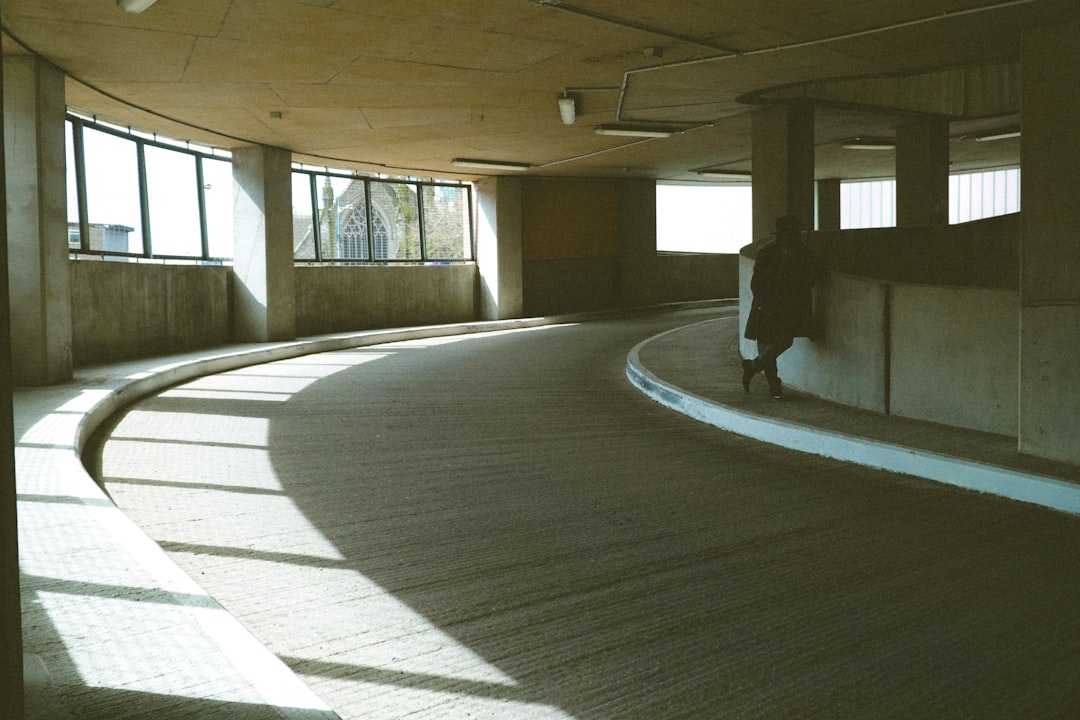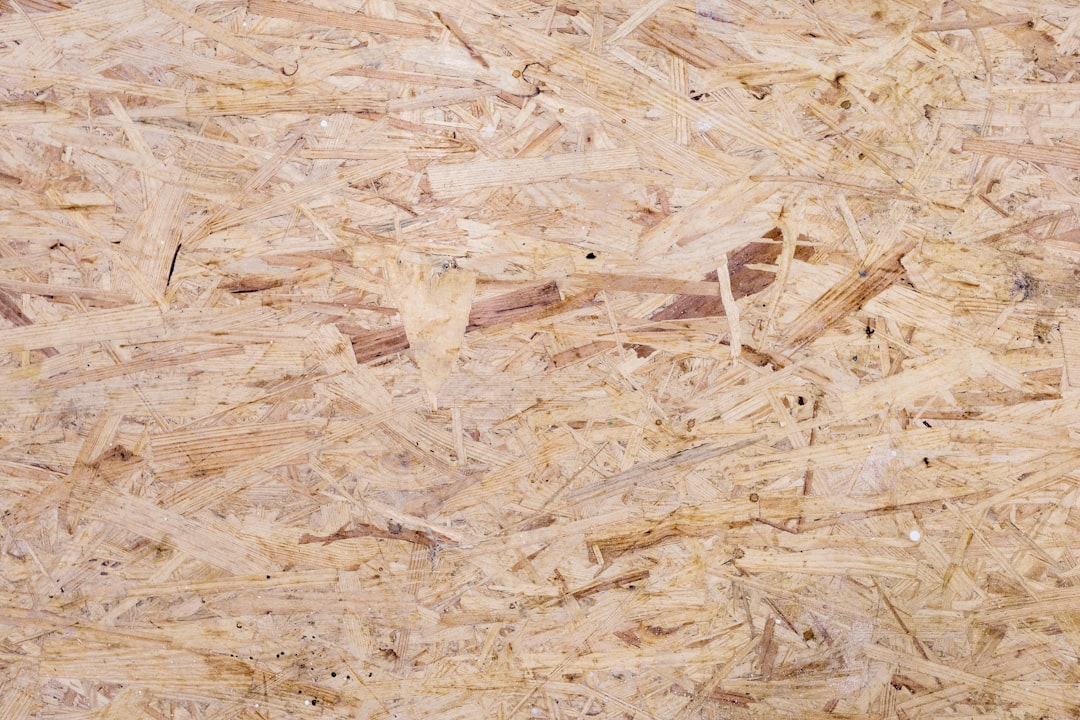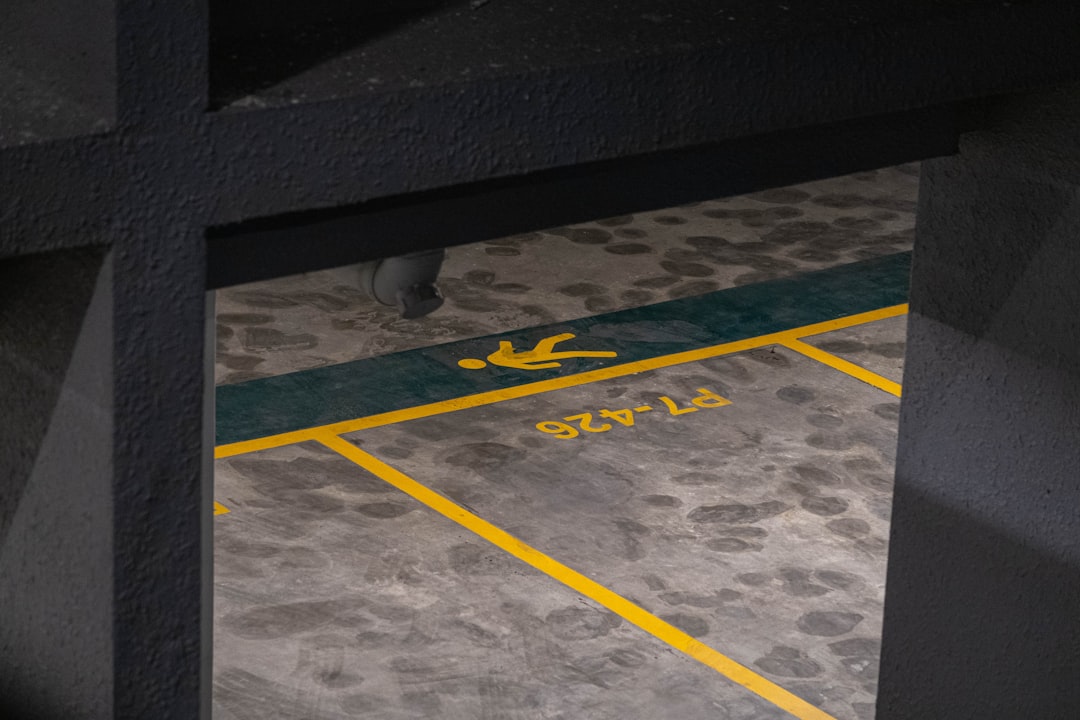

Engage prospects with a scan and streamline customer engagement with FREE QR code marketing tools by Sona – no strings attached!
Create a Free QR CodeFree consultation

No commitment

Engage prospects with a scan and streamline customer engagement with FREE QR code marketing tools by Sona – no strings attached!
Create a Free QR CodeFree consultation

No commitment
In the rapidly evolving landscape of floor sanding services, bridging the gap between offline customer interactions and digital experiences remains crucial for business growth. Many businesses in the industry struggle with prospects who show initial interest, such as picking up a brochure or walking through a showroom, but leave without taking concrete next steps. Traditional marketing materials—flyers, business cards, and showroom brochures—often fall short in driving measurable engagement or enabling seamless, timely follow-up.
QR codes have emerged as a simple yet transformative bridge between offline and online engagement, providing instant access to key resources, quotes, floor care guides, and direct booking at the moment of interest without requiring an app download. When strategically displayed on sanding equipment or in showroom QR codes, invoices, or renovation proposal packets, QR codes help vendors reach homeowners and property managers seeking reliable and professional flooring repair services, capturing high-intent interest the moment it occurs.
Integrating QR-driven workflows empowers floor sanding businesses to overcome lags in lead capture, identify previously anonymous high-value interest, and automate qualification for faster, smarter customer journeys. This overview explores how leveraging modern QR technology streamlines inefficient processes, converts fleeting interest into actionable engagement, and positions your floor care brand for growth fueled by data-driven insight.

Many floor sanding providers lose out on high-value prospects simply because leads are not captured efficiently. Prospects often interact with a brand through static brochures or business cards without ever making it into the CRM, increasing the probability of lost opportunities and giving competitors an opening. QR codes turn every physical interaction into a measurable digital moment, moving prospects directly to your booking flow or estimate request form while intent is still high.
Replacing outdated workflows with QR-powered touchpoints improves both speed and accuracy. Paper forms that languish in a van for days can be replaced with mobile-friendly wizards. Showroom displays can direct visitors to project galleries in a single scan. Even after-hours drive-by interest can be captured using vehicle decals with codes that route to quotes or availability calendars.
By automating intent-driven capture with real-time analytics, QR codes transform missed leads and slow, analog handoffs into actionable inbound activity. Many providers see time-to-contact shrink from days to minutes, directly improving win rates in competitive bids. Tools like Sona QR help you manage codes, route scans by context, and measure performance, so you can double down on what works.

Floor sanding businesses face persistent offline-to-online disconnects. Customers notice marketing pieces, see a branded van, or interact with a sample board, yet there is often no easy path from curiosity to action. Without digital capture, engagement data is invisible and teams cannot tell which placements drive interest or which messages produce qualified leads.
QR codes solve this by creating a direct link between physical touchpoints and digital experiences. A showroom visitor can scan a code on a sample board to view a project walkthrough video, learn about finish durability, and request a same-day quote. A homeowner can scan a leave-behind card to read care instructions or leave a review that feeds your local SEO profile. The moments where interest typically fades are replaced with immediate access and measurable next steps.
These benefits apply throughout the floor sanding journey. From an appointment magnet on a refrigerator to a yard sign outside a project, QR codes deliver convenience for customers and clarity for your team. For review generation, streamline the process with Google reviews QR.
Floor sanding services operate in a multi-touch environment encompassing showrooms, home visits, trade shows, and direct mail. If engagement is not captured at each stage, lead data remains incomplete and nurturing suffers. QR codes give you flexible formats that match different use cases, so you can collect the right signal from every interaction and send people to the most relevant destination.
Choosing the correct format matters, since it shapes the action a user can take. For quick bookings and estimates, web link QR codes work well. For field teams, Wi-Fi access QR codes simplify connectivity so demos or AR visualizations run smoothly. Most providers favor dynamic QR codes for marketing because destinations can evolve and analytics flow into your CRM in real time.
Whenever the goal involves marketing or operational flexibility, prioritize dynamic QR codes over static ones. Dynamic codes support URL updates and analytics that illuminate which placements drive qualified actions. Platforms like Sona QR let you generate, organize, and edit codes in one place, then push engagement data to your CRM for follow-up.

Growth often hides in overlooked touchpoints. Many providers focus only on the showroom floor or website contact forms, which leaves significant engagement on the table. Consider the full journey: a homeowner sees your van, picks up a brochure, flips through finish samples, and later receives an invoice. Each of these moments is an opportunity to capture intent and move the buyer forward.
Another source of missed growth is internal handoffs. Marketing may generate interest at an event, but if that interest never converts into a sales-ready lead with context, the momentum stalls. QR codes structure these moments with consistent CTAs and tracking, so nothing slips through the cracks. Explore Sona QR’s use case library for ideas to cover each stage.
Taken together, these placements create a connected ecosystem. Every surface becomes a potential onramp to your digital pipeline, and every interaction contributes to data you can act on.

The most successful campaigns start with specific, high-impact use cases that map to common customer interactions. For floor sanding providers, three use cases tend to deliver reliable results: instant estimates, portfolio validation, and review collection. Each one compresses time to value for the customer and increases the likelihood of conversion for your team.
Under each use case, measure performance against clear outcomes such as percentage of scans that convert to qualified leads, days to schedule, or review volume lift. With dynamic codes and CRM integration in place, you can iterate quickly to improve results.
These three use cases also support ongoing nurture. A scan to an estimate tool might trigger a follow-up email with finish comparisons. A portfolio scan could tag the prospect’s preferences and prompt a consultation invite. A review scan can unlock a referral workflow with a thank-you incentive.
Each scan reveals intent, along with where and when that intent surfaced. By deploying distinct QR codes across multiple touchpoints, you can automatically segment audiences by stage, interest, and context. This segmentation informs tailored follow-up through email, SMS, and paid media, which helps you spend less and convert more.
For floor sanding services, audience distinctions often include homeowners versus property managers, DIY researchers versus ready-to-book buyers, and first-time refinishing versus maintenance recoats. Knowing which group a scanner belongs to allows you to tailor content to their concerns, such as durability for landlords or noise and dust control for families.
With Sona QR, each code becomes a smart gateway into your funnel. You can manage segments centrally, enrich profiles with scan behavior, and launch retargeting without manual data wrangling. For paid activation strategy, use Sona’s Playbook on intent-driven retargeting.
QR codes are connective tissue across your full marketing program. They give print and in-person channels a direct link to your digital engine and provide performance visibility that traditional materials lack. In floor sanding, this integration is especially valuable because buyer journeys span homes, trade events, showrooms, and job sites.
Start by mapping the typical customer flow, then align QR placements to each stage. Pair every code with a benefit-driven CTA and a mobile-optimized destination. The goal is to reduce friction at every step while capturing data that supports smart follow-up.
QR codes serve as the offline entryway to your digital marketing stack. With a centralized platform like Sona QR, you can manage destinations, track scans in real time, and sync insights to your CRM and ad systems. This creates a closed loop between offline exposure and online conversion.
Clarify the business outcome before you print anything. Do you want more estimate requests, faster bookings, or an increase in reviews? Align the code’s purpose to a single, measurable goal. For example, at a home renovation expo, focus on “Scan to get a guaranteed 24-hour quote turnaround,” then design the full journey around that promise.
Choose a use case that matches the audience and setting. In a showroom, you might emphasize finish comparisons and booking consultations. On jobsite signage, prioritize portfolio access and quick estimates. The simpler the next step, the higher the conversion rate.
Select a format and code type that fit the goal. For fixed destinations like a warranty PDF, a static QR code works. For campaigns where you need analytics, retargeting, and the ability to change destinations, choose dynamic QR codes. They unlock testing, personalization, and long-term flexibility.
For most marketing uses, dynamic is the right choice. You can update seasonal promos, tailor content by region, and feed scan data into your CRM. If your goal is rapid lead capture with accurate attribution, dynamic codes give you the control you need.
Design for scanning first, then aesthetics. Use a clear frame and a benefit-driven CTA, such as “Scan to see your price in 2 minutes” or “Scan to book dustless sanding.” Include your logo and brand colors, but avoid overwhelming patterns. Keep sufficient contrast between the code and background.
Test across phones, angles, and lighting conditions. If the code will appear on sanding equipment or vehicles, evaluate scannability from different distances. Print a proof at actual size and test with multiple devices. Catching a scanning issue before print saves time and budget.
Roll out codes where missed engagement is most costly. Prioritize expo displays, showroom samples, jobsite signs, and printed estimates. For vehicles, place codes on the rear door so they can be scanned by people walking by or parked behind you.
Match placement to behavior. In showrooms, put codes at eye level near samples. On direct mail, ensure the code is large enough and surrounded by white space. At events, repeat the code on banners and handouts so visitors encounter it more than once.
Monitor scan performance by time, location, and device. Measure downstream behavior such as form completion rate, time-to-contact, and booked consultations. Use A/B tests to compare CTAs and tweak landing pages to reduce friction. For modeling and reporting frameworks, review multi-touch attribution.
Close the loop by integrating with tools like Sona QR. Create alerts for high-intent scans, score leads based on behavior, and automatically enroll scanners into nurture sequences. Regularly retire underperforming placements and reinvest in the assets that generate qualified opportunities.
Incomplete data collection remains a recurring frustration in floor sanding services. Many providers rely on generalized website analytics that do not capture the true impact of print campaigns, showroom interactions, and jobsite signage. Without scan-level detail and lead-level attribution, it is hard to know which investments actually drive pipeline or shorten sales cycles.
Robust QR tracking fills these gaps by capturing the who, when, and where of engagement, then linking it to outcomes. With a structured analytics setup, you can measure scan-to-lead conversion, estimate quality, and response times. This creates a feedback loop that guides smarter creative, clearer CTAs, and better placement decisions.
Benchmarks vary by market, but many providers aim for 10 to 20 percent scan-to-form completion from high-intent placements—such as quotes and invoices—3 to 8 percent from event signage, and 1 to 3 percent from vehicles. Track your own baselines, then work toward consistent improvement through testing.
Platforms like Sona QR and Sona combine scan tracking, identity resolution, and CRM sync, so you can connect offline engagement to pipeline and revenue. For deeper context on budgeting and reporting, see Sona’s perspective on revenue attribution.
Once you have the basics in place, small optimizations can produce big gains. Everything from code placement to CTA language influences scan behavior. Treat your QR program as a living system, test regularly, and keep the customer’s context in mind.
Training staff is a force multiplier. Showroom associates and field crews can prompt scans at key moments: when a customer is comparing finishes, during a walkthrough, or after a project handoff. A warm prompt combined with a clear benefit increases scan rates significantly.
These practices compound over time. As you accumulate performance data and refine experiences, your QR program evolves into a reliable engine for steady pipeline growth and stronger customer relationships.

Modern floor sanding abounds with innovation, from dust control systems to sustainable finishes. The challenge is that prospects rarely see these differentiators in action long enough to shift their decision. QR codes help bring innovations to life by delivering the right content at the right moment, with the convenience and immediacy customers expect.
Transparent education builds trust. When homeowners can scan a sample to watch a 90-second dustless sanding demo or compare finish durability, they feel informed and in control. These micro-moments accelerate decisions and reduce objections, especially regarding timelines, cleanliness, and long-term maintenance.
These innovations position your brand as a partner, not just a vendor. The more accessible your expertise becomes through QR-enabled experiences, the easier it is for customers to choose you with confidence.
The disconnect between offline engagement and digital tracking has long limited growth in floor sanding services. QR codes resolve this by turning every physical surface into a digital entry point. With instant access to estimates, proof of quality, and care resources, customers get answers when they need them and you gain the data required to engage thoughtfully and quickly.
A unified QR strategy, supported by deliberate tracking and smart analytics, ensures that every moment of interest is measurable and actionable. Use dynamic codes on your highest-traffic assets, integrate scan data with your CRM, and automate follow-up to accelerate the buyer journey. Platforms like Sona QR make it simple to generate, manage, and analyze codes, while Sona.com links scans to revenue so you can scale what works. Start creating QR codes for free.
QR codes are far more than digital shortcuts. They represent a strategic answer to the ongoing disconnect between in-person interactions and online engagement in floor sanding. By transforming collateral, showroom demos, and jobsite signs into gateways for both instant information and ongoing relationship-building, you can convert fleeting interest into qualified leads and repeat customers. Whether automating quotes, surfacing upsell signals, or connecting attribution to real revenue, adopting QR-driven workflows gives floor care providers a measurable edge in a market where timely response and data-driven operations have become the new keys to success.
QR codes have revolutionized floor sanding services by transforming traditional marketing and customer engagement into dynamic, measurable growth opportunities. Whether it’s streamlining customer acquisition, enhancing client communication, or providing instant access to service details and maintenance tips, QR codes eliminate friction and deliver seamless, mobile-friendly experiences that turn prospects into loyal customers. Imagine instantly connecting homeowners to personalized sanding quotes or aftercare guides with a simple scan—boosting trust and satisfaction every step of the way.
With Sona QR, you can effortlessly create dynamic, trackable QR codes tailored to your floor sanding business. Update your campaigns on the fly without costly reprints, monitor which marketing efforts generate the most leads, and link every scan directly to revenue growth. No missed connections, no guesswork—just smarter, more profitable customer interactions.
Start for free with Sona QR today and unlock the full potential of QR codes to elevate your floor sanding services and drive measurable results.
Floor sanding and refinishing involve preparing the floor surface by sanding to remove old finishes and imperfections, then applying new finishes to restore and protect the wood, often enhanced by modern techniques like dustless sanding.
The cost varies based on factors like square footage, wood species, finish preference, and repair needs, and can be quickly estimated using interactive QR code-enabled calculators provided by floor sanding services.
Benefits include restoring floor appearance, increasing durability, improving home value, enabling dust control during sanding, and providing maintenance guidance through digital resources.
Choose providers who offer transparent pricing, showcase portfolios through digital galleries, facilitate easy booking and estimates via QR codes, provide customer reviews, and use modern dust control and finishing techniques.
Services include traditional drum and orbital sanding, dustless sanding for cleaner work, refinishing with various finishes, maintenance recoats, gap filling, and aftercare support delivered through digital guides.
QR codes bridge offline and online engagement by enabling instant access to estimates, booking, care guides, portfolios, and reviews, capturing leads in real time and automating follow-ups.
QR codes appear on brochures, showroom displays, vehicles, jobsite signs, invoices, trade shows, direct mail, and final project handoffs to capture customer interest and drive actions.
Dynamic QR codes are preferred for marketing as they allow destination updates and analytics, including web links for bookings, vCards for contact sharing, SMS or email for inquiries, Wi-Fi access for demos, and app downloads.
By using QR codes with integrated analytics to capture scan data such as source, time, and device, businesses can measure scan-to-lead conversion rates, optimize placements, automate CRM updates, and attribute revenue accurately.
They should define a clear use case, choose the appropriate QR code type, design and test the code for scannability, deploy codes on high-impact channels, and continuously track and optimize performance.
Distinct QR codes at different customer journey stages enable segmentation by intent and behavior, allowing tailored follow-ups and retargeting that improve conversion and reduce marketing costs.
QR codes can deliver content on dustless sanding demos, finish durability comparisons, sustainability practices, customer testimonials, maintenance guides, and transparent pricing tools to educate and build trust.
Use Sona QR's trackable codes to improve customer acquisition and engagement today.
Create Your FREE Trackable QR Code in SecondsJoin results-focused teams combining Sona Platform automation with advanced Google Ads strategies to scale lead generation

Connect your existing CRM

Free Account Enrichment

No setup fees
No commitment required

Free consultation

Get a custom Google Ads roadmap for your business






Launch campaigns that generate qualified leads in 30 days or less.
